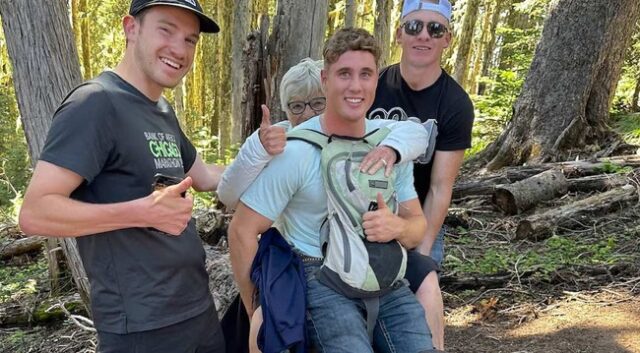
Ursula Bannister, a 79-year-old hiker, faced an unexpected crisis while descending from High Rock Lookout near Ashford, Washington. After scattering flowers in memory of her mother, Bannister caught her foot in a hole, causing a severe fall that left her leg broken and twisted. In pain and stranded on the steep trail, she called out for help. Luckily, three young hikers, including 20-year-old Air Force airman Troy May, heard her cries. Despite being told by search and rescue that it would take five hours to arrive, May sprang into action, determined to assist Bannister immediately. With no painkillers or medical supplies available, May carried her down the trail himself.
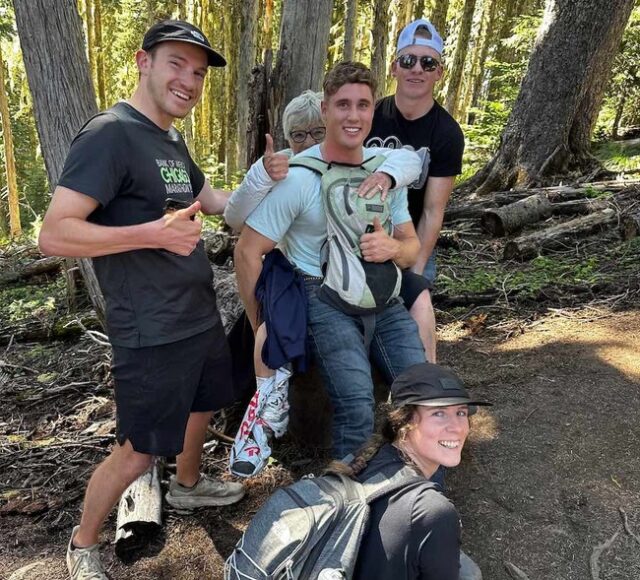
Gently lifting Bannister onto his back, May began the arduous journey downhill, carrying her for the majority of the remaining 1.8 miles. His friend, Layton Allen, helped with the final stretch, while other passersby, including an occupational therapist and a physical therapist, provided guidance and support. Along the way, the hikers engaged Bannister in conversation to distract her from the pain, and she shared stories of her life. At the trailhead, Bannister was rushed to Tacoma General Hospital where doctors treated her severe leg injuries. Bannister expressed immense gratitude for her rescuers, saying their selflessness and kindness formed a lasting friendship worth more than the discomfort she endured.
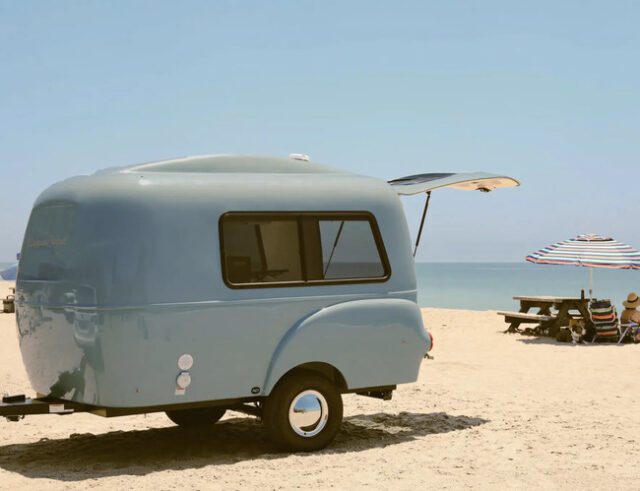
The HC1 Breeze by Happier Camper offers an appealing, budget-friendly option for adventurers who love retro design and modular functionality. Priced under $30K, the trailer provides a lightweight, customizable interior and a sleek exterior, making it both stylish and practical. Its Venice Breeze color scheme, combined with its compact 13.5-foot frame and 1100-pound dry weight, allows for easy towing by most vehicles, and its adaptability makes it ideal for varied travel needs. The trailer’s fiberglass shell ensures durability, while its design reflects mid-century modern aesthetics, perfect for those who value a vintage vibe. Continue reading “Budget-Friendly Trailer Under $30K Offers Lightweight Modular Interior Setup With Retro Design” »
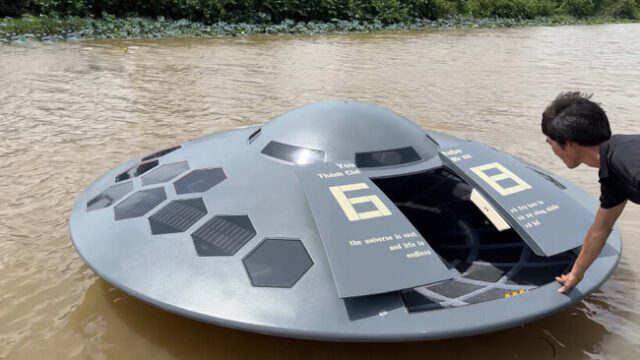
Tran Long Ho, a Vietnamese inventor and YouTuber from the Mr Ho Thanh Che channel, has captivated the internet with his latest creation: a UFO-shaped jet boat built entirely from scratch. In a viral video, Ho showcases the entire process of designing and constructing the boat, which mirrors the iconic flying saucer Continue reading “Man Builds UFO-Shaped Jet Boat From Scratch and Drives It on a River” »
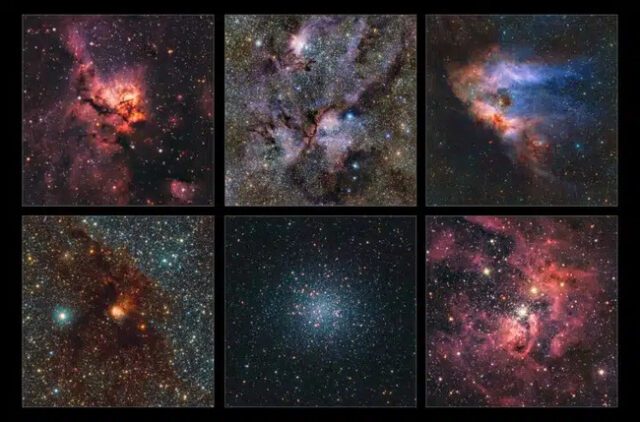
Astronomers have unveiled the most detailed infrared map of the Milky Way, thanks to over 200,000 images captured by ESO’s VISTA telescope in Chile. This groundbreaking map offers new insights into hidden parts of our galaxy, revealing areas previously obscured by dust and gas. The VISTA telescope, equipped with the infrared-sensitive VIRCAM, has been used to map vast regions of the sky, allowing scientists to peer through the cosmic dust and uncover parts of the galaxy that are inaccessible to visible light. The detailed map offers a new perspective on the structure of the Milky Way, enriching our understanding of its composition and the processes occurring within it.
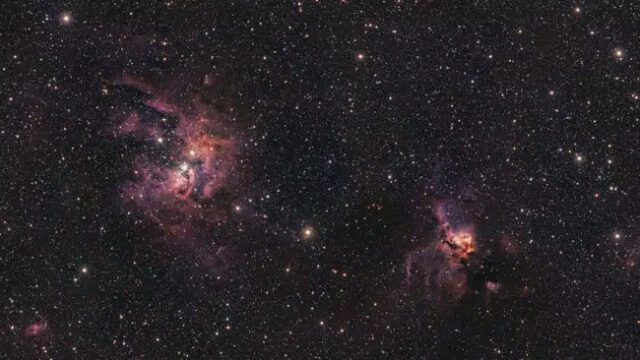
Led by astrophysicist Dante Minniti, the project has transformed the way astronomers view the Milky Way. The new map, which contains ten times more objects than the previous version released in 2012, is based on observations from 2010 to 2023. During this time, the VISTA telescope collected data on the movements and brightness changes of objects across 420 nights of observations. The map’s impact has been so profound that it has already contributed to over 300 scientific papers. This wealth of data is expected to fuel further research for years, offering unprecedented access to the inner workings of our galaxy through the ESO Science Portal.
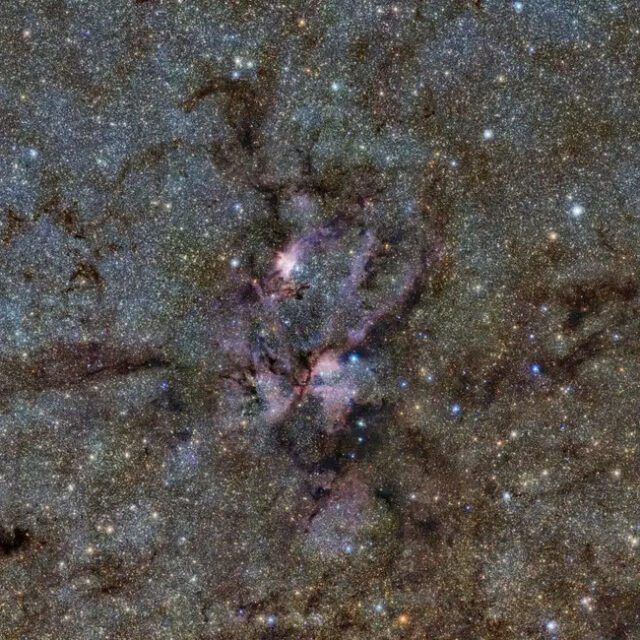
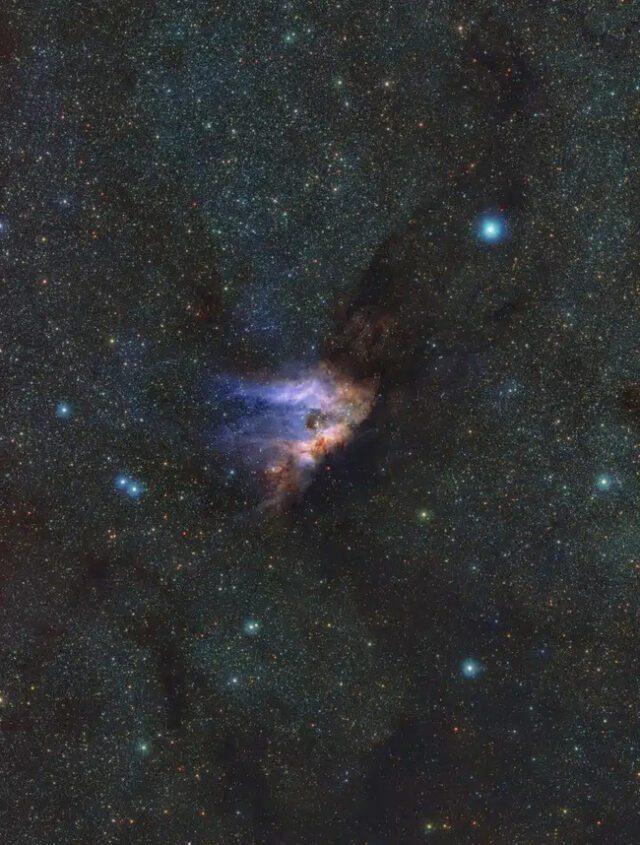
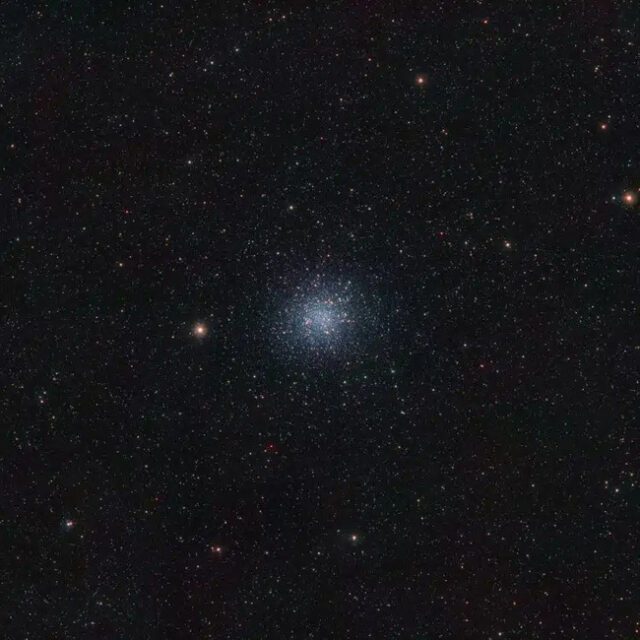
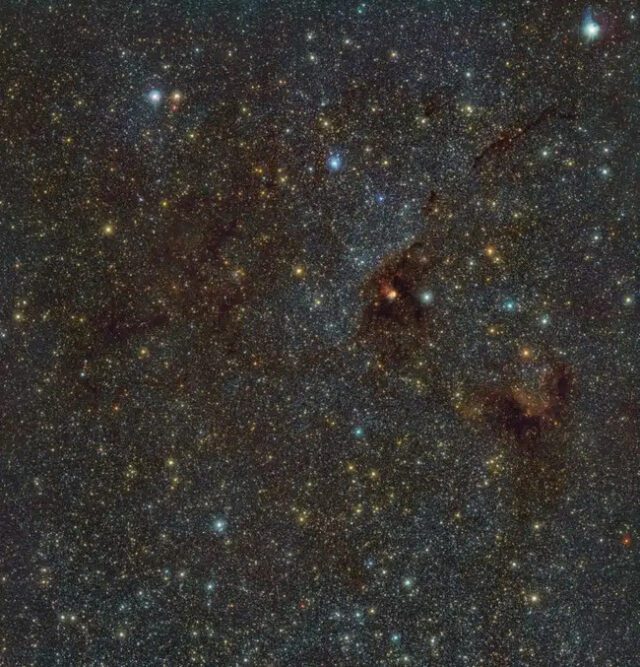
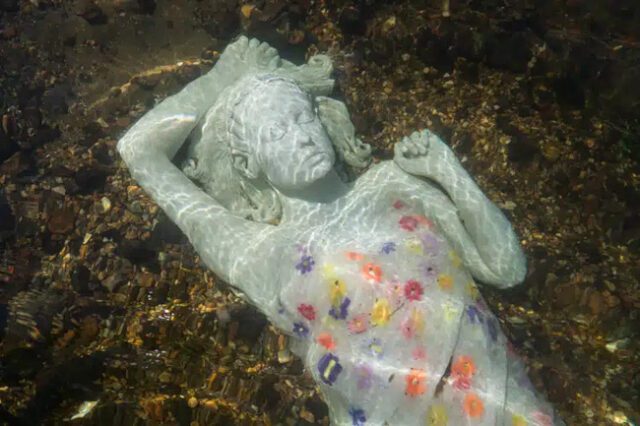
Jason deCaires Taylor, renowned for his underwater sculptures, has brought his artistry to the River Stour in Canterbury, Kent, with his latest piece titled Alluvia. This captivating installation, made from recycled glass, LEDs, and marine stainless steel, portrays a woman in a floral dress slumbering beneath the water’s surface. As a piece that embraces Taylor’s passion for environmental conservation, it includes sensors for monitoring the river’s ecosystem and glows from within at night, creating an ethereal presence. Placed on the riverbed, Alluvia replaces a previous installation damaged by dredging and serves as a harmonious tribute to the river’s constant flow and its natural rhythms.
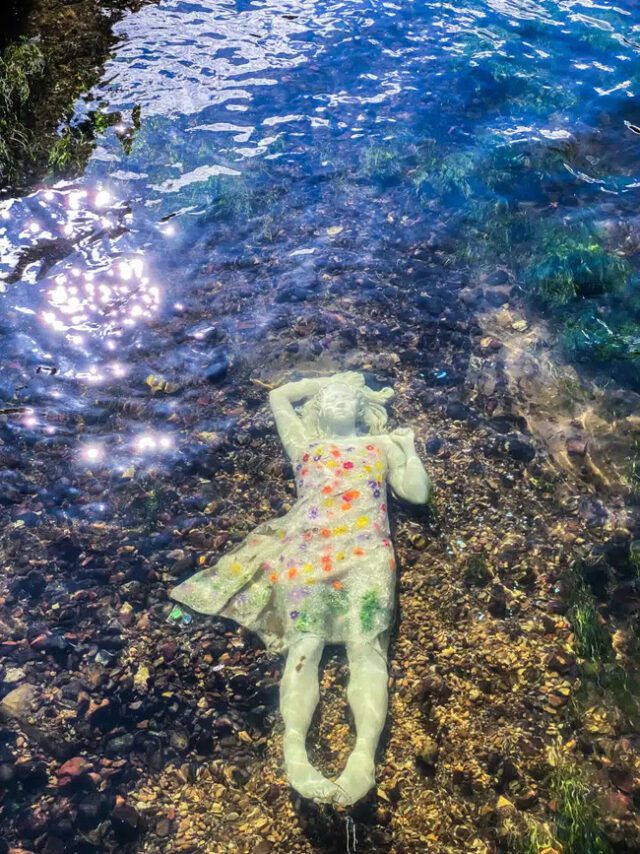
Inspired by Sir John Everett Millais’ famous painting Ophelia, Alluvia references the tragic character from Shakespeare’s Hamlet, who many believe was inspired by a real-life drowning in the River Stour. The sculpture mimics the painting’s delicate imagery, with the woman’s peaceful posture seemingly at one with the water. Taylor notes how the sculpture evolves with the river’s seasonal changes, as light, shadow, reeds, and algae interact with its form. This interplay mirrors the fluid nature of memory and perception, further deepening the connection between art, nature, and history. Located near Westgate Bridge, Alluvia offers visitors a mesmerizing glimpse into both the past and present of the river.
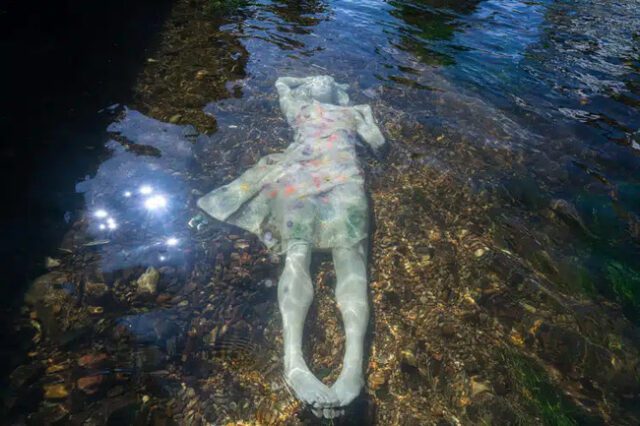
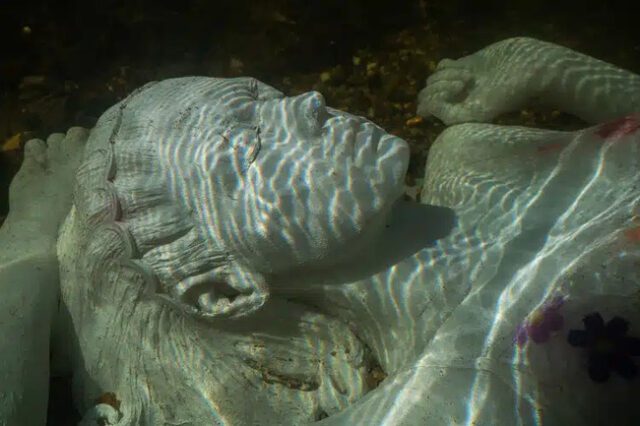
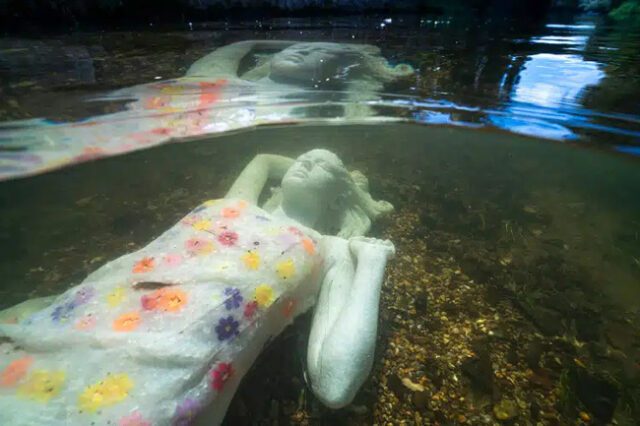
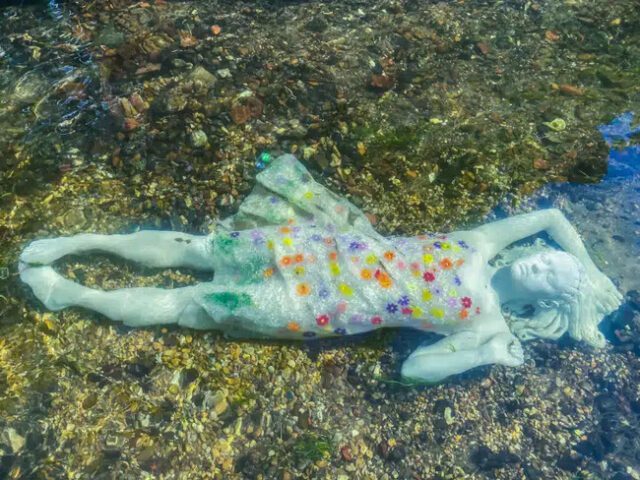
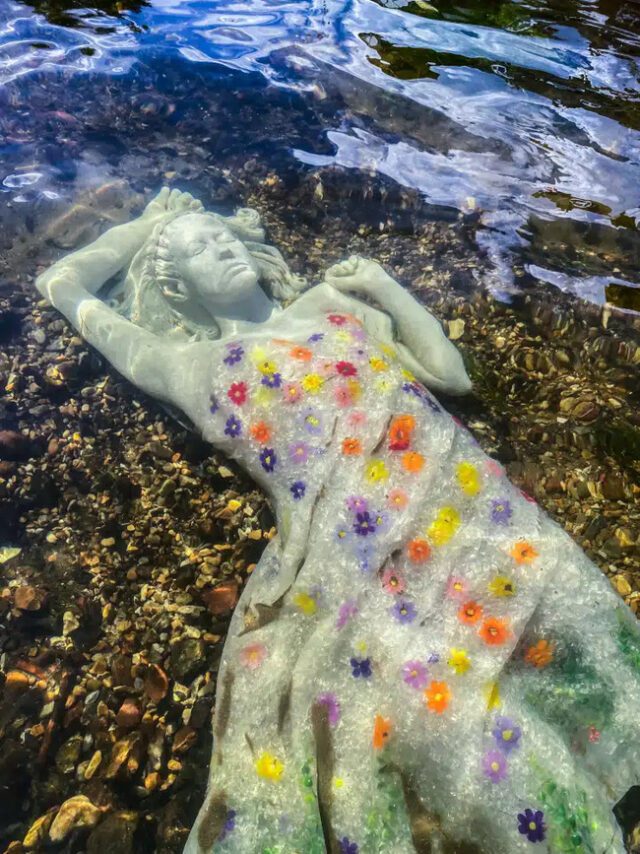
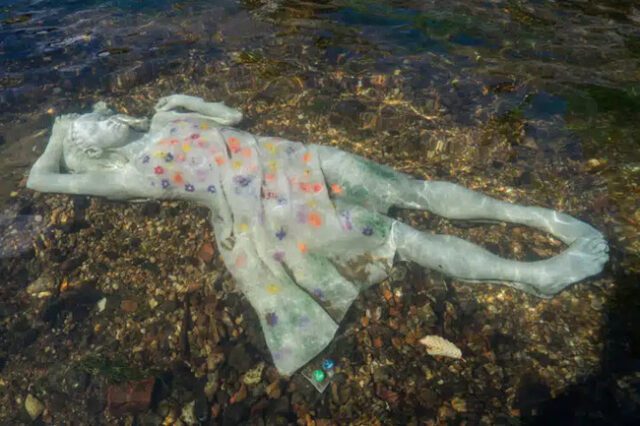

The Shine 2.0 ultra-portable wind turbine generator offers an innovative solution for outdoor enthusiasts and anyone who needs reliable, green energy on the go. Unlike solar-powered alternatives, which depend on sunlight, Shine 2.0 harnesses the power of the wind, allowing it to generate up to 50W of energy regardless of the weather or time of day. Compact and lightweight, this device can easily fit into a backpack, making it ideal for camping, hiking, or emergency Continue reading “Ultra-Portable Wind Turbine Generator Lets You Fast-Charge Your Devices Anywhere With Green Energy” »
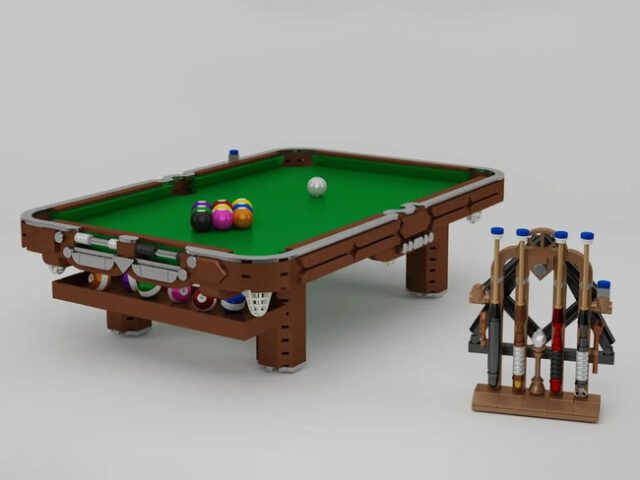
The LEGO Vintage Billiards Table, designed by LEGO builder Golden Eye, is a delightful miniature recreation of a classic pool table, complete with all the necessary accessories—from cue sticks to powder cubes. This build, though tiny, manages to capture the grandeur and intricacy of a full-sized billiards table, complete with realistic touches such as nets to catch the balls, a scoring system, and even a tray underneath for storing additional Continue reading “This Miniature LEGO Billiard Table Comes With Every Accessory From Cue Sticks to Powder Cubes” »
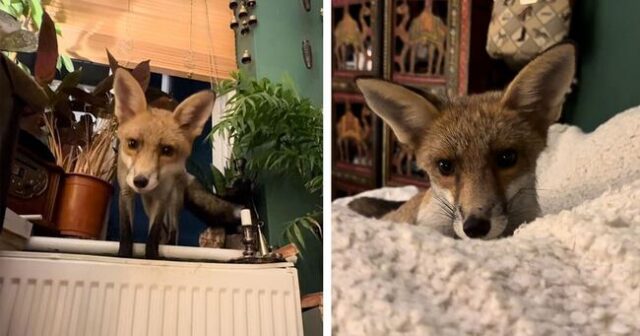
A London woman named Lilly Edith has formed an extraordinary bond with a wild fox she calls Melady Pilcrow. Melady, a female fox, regularly visits Edith’s home for playtime, snacks, and even cuddles, often curling up in her bed for naps. Their unique friendship began during a difficult time in Edith’s life when she asked the universe for a sign that everything would be alright. The next morning, she found Melady staring through her French doors, and from that moment, the two became inseparable. Edith, who has a background in veterinary training and a deep connection to her Native American heritage, views the fox as a spiritual messenger. She captures their heartwarming moments on TikTok, where her videos have gained her over 9,000 followers.

Melady’s visits have become a comforting routine, with the fox often arriving at night or in the early morning hours. Though Edith’s followers sometimes express concern about her safety around a wild animal, Edith takes necessary precautions and is aware of the risks. She carefully cleans and sanitizes her home after Melady’s visits and stays on top of her vaccinations, including a tetanus booster. Edith emphasizes that foxes are naturally curious and not as dangerous as some might think. Their visits, although unusual, have brought light and joy into her life, showing that even wild animals can form deep, trusting bonds with humans.
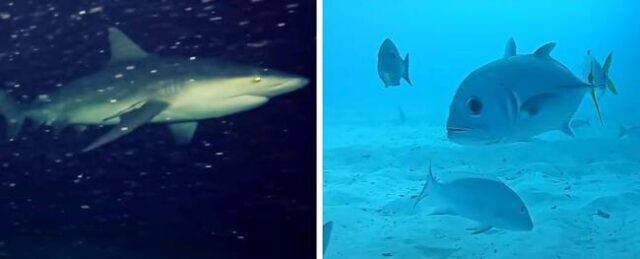
In an unexpected turn of events, marine engineer Odysseas Froilan captured stunning undersea footage after accidentally dropping his GoPro overboard while working on a cruise ship in the Bahamas. The footage, now viewed by millions, reveals a mesmerizing glimpse into the underwater world beneath the ocean liner. Froilan, who works aboard the massive vessel, used this opportunity to observe and document the marine life that thrives beneath the surface. Among the daytime Continue reading “Man Drops GoPro Overboard on Cruise Ship, Captures Incredible Undersea Footage” »








































